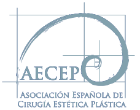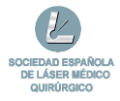Abdominoplasty
Abdominoplasty
The Tummy Tuck (Abdominoplasty) is the surgical technique aimed at rebuilding abdominal wall tissues, damaged and distended by previous pregnancies, diets thinning, age, weight reduction operations, or caused by illnesses.
Abdominoplasty is a Cosmetic Surgery indicated in those with sagging abdominal tissues and, therefore, a swollen abdomen and pendulous (hanging).
The duration of the intervention has an approximate Two and a Half Hours, but may continue longer taking into account that it is common to associate other surgical procedures such as: Liposuction of waist.
What is tummy tuck (Abdominoplasty)?
Abdominoplasy: This is a Surgical Technique aimed at the reconstruction of abdominal wall tissue, damaged and distended by previous pregnancies, diets, age, weight reduction operations, illnesses etc… Aims to achieve an aesthetic abdomen, and firmness, removing excess skin and working on the muscles.
Who needs a tummy tuck?
This type of intervention is advisable in those with flaccidity in abdominal tissues and, therefore, a swollen abdomen and pendulous (hanging). This surgery is very much requested by both sexes males and females and their results are excellent.
Anesthesia
Aways with general anesthesia.
Technique
A cut (insicion) is made that goes from side to side of the hip above the pubic mound, then the skin is stretched between the navel and the pubis, the excess is cut away and the navel is repositioned as it was previously seperated through the incision in the skin.
When the tissue is unstuck you can take advantage to suture the abdominal muscles in order to repair the muscular diastasis or the seperated muscular produced by the same causes of the loosening of the skin (pregnancy, diet, illnesses etc….). The joining of muscles together again, also reduces the outline shape of the waist.
Duration of intervention
Abdominoplasty has aduración of about two hours, but may continue taking into account that it is common to associate other surgical procedures such as Liposuction of the waist.
Recovery
The patient returns to his room, once recovered from anesthesia, having some drainages, which will remain for 4 or 5 days,this is intended to evacuate the fluid that eliminates from the wall peeling. During this time,you should maintain resting and subsequently for over a month, prevent stress to preserve the suture within the muscles, which are slow to heal over the skin. the Stitches are removed within 10 -15 days, but for a few months, the patient will feel swollen and with a strange tenderness in the abdominal skin.
Any patient who undergoes an abdomen dermolipectomy, under normal conditions, you may resume your normal routine after one month. However, to fully observe the results of the intervention you will need to wait a year, during which time the scars would vanish and the reddish appearance blends in.
What risk is assumed in the Abdominoplasty?
Bruising: It is the abnormal accumulation of blood in the surgical area. To avoid this, a rigorous coagulation should be performed and left with drainages. If the hematoma is large, it should be re- intervened to evacuate.
Seroma: Accumulation of serous fluid which must be evacuated.
Infection: The risk of infection is now very rare, as is prevented by antibiotic prophylaxis. Case arise, and according to their degree of intensity, may affect the appearance of the scar.
Hypertrophic scars and keloids: The scar may be of poor quality, extremely thick and slow to whiten (HCM) circumstances that depends on the nature of the patient and his/her age. A keloid is a scar disease, an increase excessive thereof. In the white race it is rare, however, in the black race it is not rare of its appearance.
Deep Vein Thrombosis: The formation of clots that circulate freely and clog the blood flow in the lung, pulmonary embolism. Its appearance is very sporadic.
Fat embolism: The interruption of blood flow in the lung, produced of fat that is accidentally introduced into the blood vessels. Its incidence is very low.
Respiratory failure due to abdominal compression: when used after surgery elastic garments (girdles) that are too tight.
Hyperpigmentation of scars: Occurs either by the nature of the patient, premature exposure to the sun, or by ingestion of some drugs. its treatment involves the application of creams, peeling or laser depigmentation.
Tips/Advice
In order to prevent excessive bleeding, it is advisable suppressing acid intake acetyl salicylic acid (Aspirin) or anti-inflammatory, one week in advance. it is necessary also to enter in the fasting of solids and liquids; provision should apply at least six hours before the scheduled time to enter the hospital. In this type of intervention lymphatic drainage is advised to relieve inflammation in the area.
Frequently Asked Questions
Is a tummy tuck and liposuction the same?
The problems that are solved by a dermolipectomy and are not remedied by a liposuction, as they are different interventions; in the first the skin is cut and in the second fat is sucked.
Why is it necessary when there is excess skin for a tummy tuck?
Sagging is not resolved with a liposuction. It is necessary to remove the excess skin and return the tension/tightening to the area. This is achieved with the tummy tuck.
Are stretch marks removed with abdominoplasty?
The skin is smooth but no stretch marks disappear, only those that are removed in the area of the skin resected.
Can abdominoplasty and liposuction be associated?
Yes, in most cases it is convenient to associate tummy tuck abdominoplasty liposuction in the waist, thus optimal results.









